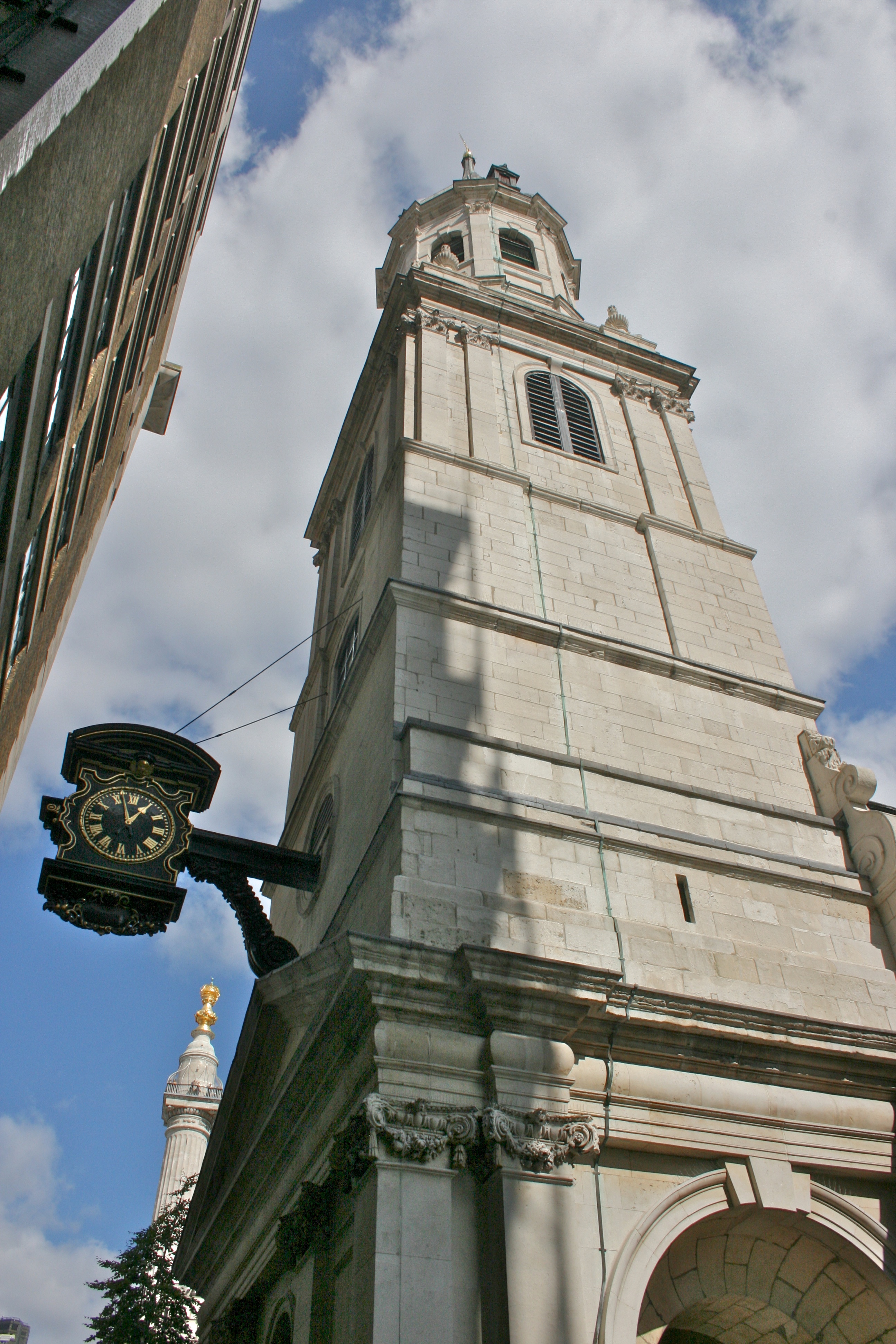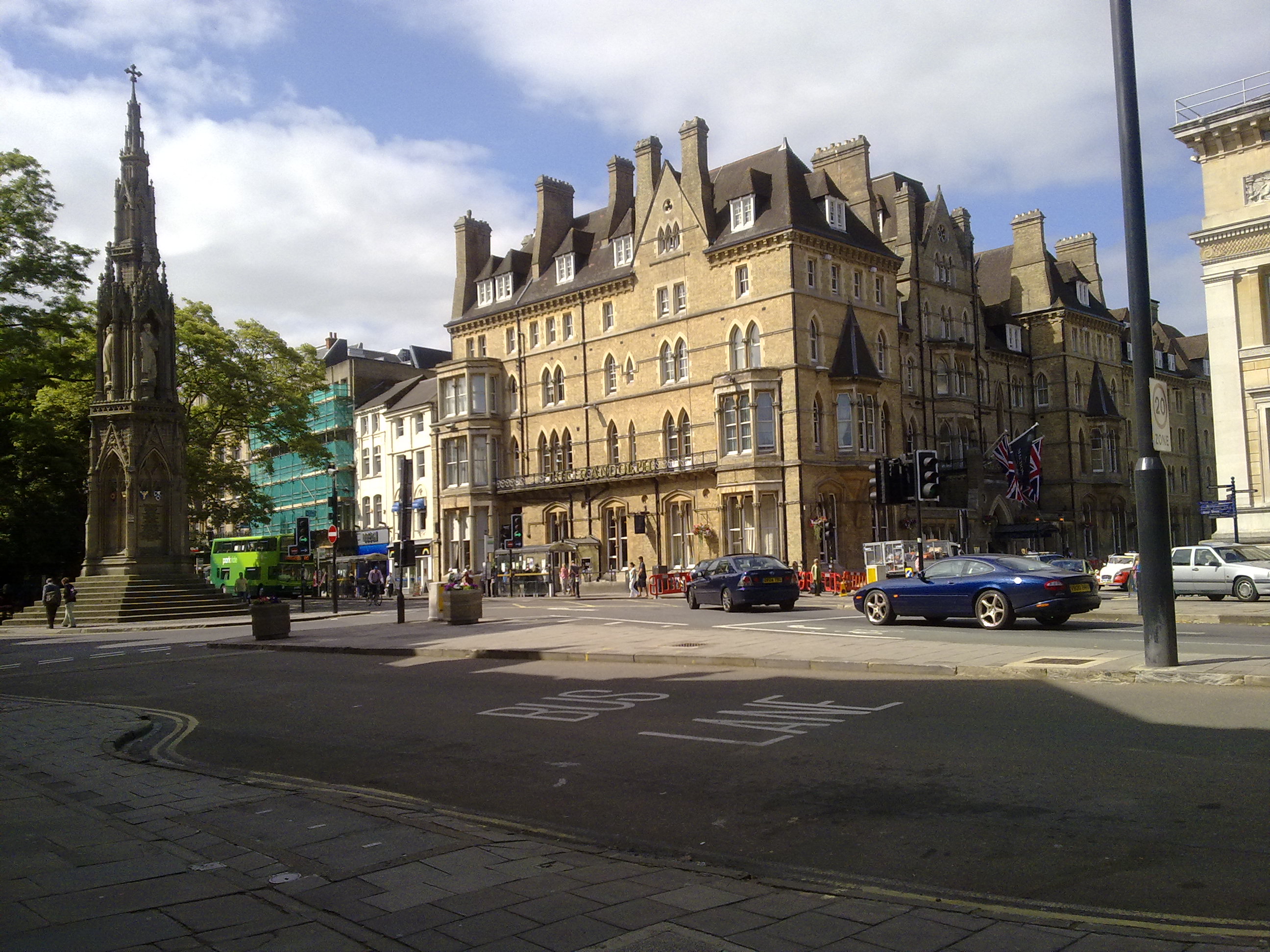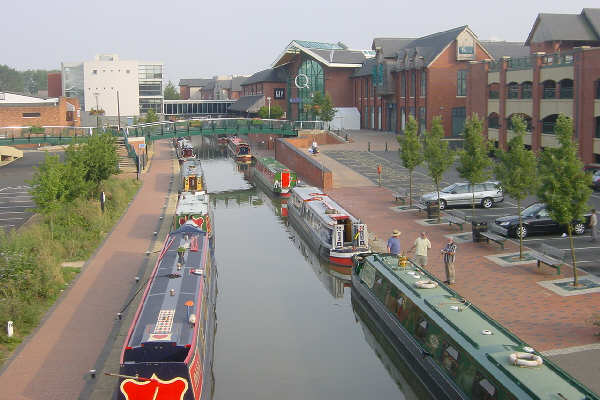|
Middleton Cheney
Middleton Cheney is a large village and Civil parishes in England, civil parish in West Northamptonshire, England. The village is about east of Banbury in Oxfordshire and about west-northwest of Brackley. The A422 road between Banbury and Brackley used to pass through Middleton Cheney, but now Bypass (road), bypasses it to the south. The United Kingdom Census 2011, 2011 Census recorded the parish's population (including Thenford) as 3,597. Archaeology and history The village's name means "middle farm" or "middle settlement". John de Chendut held the manor in the 12th century. Traces of Prehistoric Britain#Neolithic, Neolithic, Bronze Age Britain, Bronze Age and Roman Britain, Roman settlements have been found in the parish. An open field system of farming prevailed in the parish until the 18th century. Parliament of Great Britain, Parliament passed the (9 Geo. 3. c. ''102'' ) and the parish was surveyed for its inclosure awards in 1770. There is a row of 19th-century almsh ... [...More Info...] [...Related Items...] OR: [Wikipedia] [Google] [Baidu] |
United Kingdom Census 2011
A Census in the United Kingdom, census of the population of the United Kingdom is taken every ten years. The 2011 census was held in all countries of the UK on 27 March 2011. It was the first UK census which could be completed online via the Internet. The Office for National Statistics (ONS) is responsible for the census in England and Wales, the General Register Office for Scotland (GROS) is responsible for the census in Scotland, and the Northern Ireland Statistics and Research Agency (NISRA) is responsible for the census in Northern Ireland. The Office for National Statistics is the executive office of the UK Statistics Authority, a non-ministerial department formed in 2008 and which reports directly to Parliament. ONS is the UK Government's single largest statistical producer of independent statistics on the UK's economy and society, used to assist the planning and allocation of resources, policy-making and decision-making. ONS designs, manages and runs the census in England an ... [...More Info...] [...Related Items...] OR: [Wikipedia] [Google] [Baidu] |
Parliament Of Great Britain
The Parliament of Great Britain was formed in May 1707 following the ratification of the Acts of Union 1707, Acts of Union by both the Parliament of England and the Parliament of Scotland. The Acts ratified the treaty of Union which created a new unified Kingdom of Great Britain and created the parliament of Great Britain located in the former home of the English parliament in the Palace of Westminster, near the City of London. This lasted nearly a century, until the Acts of Union 1800 merged the separate British and Irish Parliaments into a single Parliament of the United Kingdom with effect from 1 January 1801. History Following the Treaty of Union in 1706, Acts of Union 1707, Acts of Union ratifying the Treaty were passed in both the Parliament of England and the Parliament of Scotland, which created a new Kingdom of Great Britain. The Acts paved the way for the enactment of the treaty of Union which created a new parliament, referred to as the 'Parliament of Great Britain' ... [...More Info...] [...Related Items...] OR: [Wikipedia] [Google] [Baidu] |
English Gothic Architecture
English Gothic is an architectural style that flourished from the late 12th until the mid-17th century. The style was most prominently used in the construction of Gothic cathedrals and churches, cathedrals and churches. Gothic architecture, Gothic architecture's defining features are Pointed arch (architecture), pointed arches, rib vaults, buttresses, and extensive use of stained glass. Combined, these features allowed the creation of buildings of unprecedented height and grandeur, filled with light from large stained glass windows. Important examples include Westminster Abbey, Canterbury Cathedral and Salisbury Cathedral. The Gothic style endured in England much longer than in Continental Europe. The Gothic style was introduced from France, where the various elements had first been used together within a single building at the choir (architecture), choir of the Abbey of Saint-Denis north of Paris, completed in 1144. The earliest large-scale applications of Gothic architecture i ... [...More Info...] [...Related Items...] OR: [Wikipedia] [Google] [Baidu] |
All Saints' Day
All Saints' Day, also known as All Hallows' Day, the Feast of All Saints, the Feast of All Hallows, the Solemnity of All Saints, and Hallowmas, is a Christian solemnity celebrated in honour of all the saints of the Church, whether they are known or unknown. From the 4th century, feasts commemorating all Christian martyrs were held in various places, on various dates near Easter and Pentecost. In the 9th century, some churches in the British Isles began holding the commemoration of all saints on 1 November, and in the 9th century this was extended to the whole Catholic Church by Pope Gregory IV. In Western Christianity, it is still celebrated on 1 November by the Western Catholic Church as well as by many Protestant churches, such as the Lutheran, Anglican, and Methodist traditions. The Eastern Orthodox Church and associated Eastern Catholic and Eastern Lutheran churches celebrate it on the first Sunday after Pentecost. The Syro-Malabar Church and the Chaldean Catholic C ... [...More Info...] [...Related Items...] OR: [Wikipedia] [Google] [Baidu] |
Church Of England Parish Church
A parish church in the Church of England is the church which acts as the religious centre for the people within each Church of England parish (the smallest and most basic Church of England administrative unit; since the 19th century sometimes called the ecclesiastical parish, to avoid confusion with the civil parishes in England, civil parish which many towns and villages have). In many English villages the church is a prominent landmark and its tower is often the tallest structure in the settlement. Parishes in England In England, there are parish churches for both the Church of England and the Roman Catholic Church. References to a "parish church", without mention of a denomination, will, however, usually be to those of the Church of England due to its status as the Established Church. This is generally true also for Wales, although the Church in Wales is Welsh Church Act 1914, dis-established. The Church of England is made up of parishes, each one forming part of a dioce ... [...More Info...] [...Related Items...] OR: [Wikipedia] [Google] [Baidu] |
Overthorpe, Northamptonshire
Overthorpe is a village and civil parish in West Northamptonshire, about east of Banbury in Oxfordshire and southeast of junction 11 of the M40 motorway. Overthorpe is in the west of West Northamptonshire, and its western boundary forms part of the boundary with Oxfordshire. It is part of the informal district of Banburyshire. The 2001 Census recorded the parish's population as 242, reducing slightly to 235 at the 2011 Census. History The Manor House is 17th-century, with a Tudor Revival rear extension that was added about 1930. The village has at least three other 17th-century houses and a 17th- or 18th-century barn. An open field system of farming prevailed in Overthorpe until the 18th century. Traces of ridge and furrow survive north of the village. Overthorpe used to be part of the parish of Middleton Cheney, but its land tenure was linked with that of Warkworth. Parliament passed a single inclosure act for both Overthorpe and Warkworth, the Warkworth Inclosure Act 176 ... [...More Info...] [...Related Items...] OR: [Wikipedia] [Google] [Baidu] |
William Wilkinson (architect)
William Wilkinson (1819–1901) was a British Gothic Revival architecture, Gothic Revival architect who practised in Oxford, England. Family Wilkinson's father was a builder in Witney in Oxfordshire. William's elder brother George Wilkinson (architect), George Wilkinson (1814–1890) was also an architect, as were William's nephews Clapton Crabb Rolfe, C.C. Rolfe (died 1907) and Harry Wilkinson Moore, H.W. Moore (1850–1915). Career Most of Wilkinson's buildings are in Oxfordshire. His major works include the Macdonald Randolph Hotel, Randolph Hotel in Oxford, completed in 1864. He was in partnership with his nephew H.W. Moore from 1881. In his long career Wilkinson had a number of pupils, including Henry James Tollit, H.J. Tollit (1835–1904). Works Churches In 1841, at the age of only 22, Wilkinson designed a new Church of England parish church, Holy Trinity at Lew, Oxfordshire. His other work on churches included: *St Leonard's parish church, Eynsham: restoration, 185 ... [...More Info...] [...Related Items...] OR: [Wikipedia] [Google] [Baidu] |
British Rail
British Railways (BR), which from 1965 traded as British Rail, was a state-owned company that operated most rail transport in Great Britain from 1948 to 1997. Originally a trading brand of the Railway Executive of the British Transport Commission, it became an independent statutory corporation in January 1963, when it was formally renamed the British Railways Board. British Railways was formed on 1 January 1948 as a result of the Transport Act 1947, which nationalised the Big Four British railway companies along with some other (but not all) smaller railways. Profitability of the railways became a pressing concern during the 1950s, leading to multiple efforts to bolster performance, including some line closures. The 1955 Modernisation Plan formally directed a process of dieselisation and electrification to take place; accordingly, steam locomotives had been entirely replaced by diesel and electric traction (except for the narrow-gauge Vale of Rheidol Railway tourist lin ... [...More Info...] [...Related Items...] OR: [Wikipedia] [Google] [Baidu] |
Farthinghoe Railway Station
Farthinghoe was a railway station which served the Northamptonshire village of Farthinghoe in England. It opened in 1851 as part of the Buckinghamshire Railway's branch line to Verney Junction which provided connections to Bletchley and Oxford and closed in 1963. History Situated in an isolated location over a mile from the village from which it took its nameSimpson, B., p. 73. - and further still from two others it was supposed to serve: Greatworth and Middleton Cheney - Farthinghoe station first appeared in timetables in October 1851. Its precise opening date is unknown, but was almost certainly within one year of the line's inauguration. The Buckinghamshire Railway provided basic facilities which consisted of a single wooden platform and solitary goods siding on the up side of the line. The main station building, a part-timber and part-brick structure in an "H" shape, was of unusual construction, with the main ticket office and booking hall housed in a one-storey wea ... [...More Info...] [...Related Items...] OR: [Wikipedia] [Google] [Baidu] |
Banbury To Verney Junction Branch Line
Banbury is an historic market town and civil parish on the River Cherwell in Oxfordshire, South East England. The parish had a population of 54,335 at the 2021 Census. Banbury is a significant commercial and retail centre for the surrounding area of north Oxfordshire and southern parts of Warwickshire and Northamptonshire which are predominantly rural. Banbury's main industries are motorsport, car components, electrical goods, plastics, food processing and printing. Banbury is home to the world's largest coffee-processing facility ( Jacobs Douwe Egberts), built in 1964. The town is famed for Banbury cakes, a spiced sweet pastry. Banbury is located north-west of London, south-east of Birmingham, south-east of Coventry and north-west of Oxford. Toponymy The name Banbury may derive from "Banna", a Saxon chieftain said to have built a stockade there in the 6th century (or possibly a byname from meaning ''felon'', ''murderer''), and / meaning ''settlement''. In Anglo Saxon ... [...More Info...] [...Related Items...] OR: [Wikipedia] [Google] [Baidu] |
Buckinghamshire Railway
The Buckinghamshire Railway was a railway company in Buckinghamshire and Oxfordshire, England that constructed railway lines connecting Bletchley, Banbury and Oxford. Part of the route is still in use today as the Oxford to Bicester Line. History Origins The origins of the Buckinghamshire Railway can be traced back to the gauge and territorial wars which took place in Buckinghamshire in the 1840s. The London and Birmingham Railway (L&B) had opened a standard gauge line from to on 16 October 1837, extending to Birmingham in September 1838. In June of that year, the Great Western Railway (GWR) opened the first part of its broad gauge line from to Bristol and a further branch from to had been opened by June 1844. The GWR subsequently looked to expand beyond Oxford by depositing bills for the Oxford, Worcester and Wolverhampton Railway and the Oxford and Rugby Railway which would take it into the heart of the Midlands. Seeking to prevent the GWR from annexing Bucki ... [...More Info...] [...Related Items...] OR: [Wikipedia] [Google] [Baidu] |
10 & 11 Vict
1 (one, unit, unity) is a number, numeral, and glyph. It is the first and smallest positive integer of the infinite sequence of natural numbers. This fundamental property has led to its unique uses in other fields, ranging from science to sports, where it commonly denotes the first, leading, or top thing in a group. 1 is the unit of counting or measurement, a determiner for singular nouns, and a gender-neutral pronoun. Historically, the representation of 1 evolved from ancient Sumerian and Babylonian symbols to the modern Arabic numeral. In mathematics, 1 is the multiplicative identity, meaning that any number multiplied by 1 equals the same number. 1 is by convention not considered a prime number. In digital technology, 1 represents the "on" state in binary code, the foundation of computing. Philosophically, 1 symbolizes the ultimate reality or source of existence in various traditions. In mathematics The number 1 is the first natural number after 0. Each natural numbe ... [...More Info...] [...Related Items...] OR: [Wikipedia] [Google] [Baidu] |





